Suede leather remains one of the most iconic and versatile materials in fashion and craftsmanship, valued for its soft texture, matte finish, and vintage appeal. In 2025, suede continues to dominate not only in jackets, boots, and leather chaps but also in luxury interiors and high-end accessories. Unlike full-grain leather, suede is made from the underside of the animal hide, giving it a supple feel and a slightly fuzzy surface that’s both stylish and comfortable. However, suede also demands special care to maintain its texture and resist moisture damage. Whether you’re a fashion enthusiast, a craftsman, or simply curious about its growing relevance in western wear and biker gear, understanding the characteristics, pros and cons, best uses, and cleaning methods of suede leather is essential. This complete guide will help you make informed decisions when buying, wearing, or maintaining suede leather in 2025.
What Is Suede Leather?

Suede leather is a type of leather made from the underside of an animal hide most commonly from cow, goat, lamb, or deer. Unlike full-grain leather, which uses the outer layer of the hide, suede is produced by turning the skin inside out and sanding it to create a soft, velvety nap. This gives suede its signature texture and lightweight feel. While it lacks the toughness and water resistance of top-grain leather, suede is favored for its flexibility, breathability, and luxurious matte finish. It’s often used in fashion-forward items like jackets, boots, handbags, and chaps where comfort and style take priority. Because of its delicate surface, suede requires proper care to avoid stains, scuffs, and water damage.
Is Suede a Type of Leather?

Yes, suede is indeed a type of leather. It’s made from the inner split layer of animal hides, typically from cows, goats, or lambs. While it’s softer and more flexible than full-grain leather, suede is still genuine leather—it just comes from a different part of the hide. Its distinctive napped texture gives it a luxurious, velvety feel, making it popular for fashion items like boots, jackets, bags, and leather chaps. However, suede lacks the same durability and water resistance as full-grain leather, so it’s often chosen for style and comfort rather than rugged use. Despite its delicate nature, suede remains a highly valued and authentic leather material.
Types of Suede Leather – Explained by Type
Yes, suede is a type of leather, but it has distinct characteristics that set it apart from other leather types. Here’s how it breaks down:
1. Full-Grain Leather (NOT Suede)
-
Comes from the top layer of the hide.
-
Tough, durable, and used in rugged leather goods.
-
Has a smooth, natural grain surface.
2. Top-Grain Leather (NOT Suede)
-
Slightly sanded or buffed top layer of the hide.
-
More flexible than full-grain.
-
Used in premium leather products.
3. Split Leather (This Is Where Suede Comes From)
-
The hide is split into layers, and suede is made from the inner split.
-
Lacks the outer grain, giving it a soft, velvety texture.
4. Suede Leather
-
Made from the underside of the animal skin (usually cow, goat, or lamb).
-
Soft, porous, and flexible, ideal for fashion items and accessories.
-
Prone to water and stain damage if not treated properly.
5. Nubuck Leather (Often Confused with Suede)
-
Made from the outer side of the hide like full-grain, but buffed to create a similar nap as suede.
-
Stronger and more durable than suede.
What Is Suede Leather Made Of?
Suede leather is made from the underside of animal hides, primarily from cows, goats, lambs, or pigs. During the leather-making process, the hide is split into layers. The top grain is used for traditional smooth leather, while the inner split becomes suede. This inner layer is buffed or sanded to create the signature soft, napped texture that suede is known for. The result is a material that’s lightweight, flexible, and velvety to the touch ideal for fashion items like jackets, boots, gloves, bags, and even furniture accents. Although suede lacks the toughness of full-grain leather, its breathable and supple nature makes it a favorite in both apparel and design. However, it’s important to note that suede is more porous and absorbent, which means it needs proper care and protection from water and stains.
What Is the Quality of Suede?
The quality of suede depends on several factors, including the type of animal hide used, the layer of the hide, and the treatment process. High-quality suede typically comes from lamb or calf hides, which are finer, softer, and more luxurious. Lower-quality suede may be made from tougher hides like cowhide, resulting in a coarser texture. Since suede is made from the inner split of the hide, it is less durable than full-grain leather but offers unmatched flexibility, lightweight comfort, and a distinct velvety finish. Good-quality suede should have a consistent nap, a smooth touch, and a uniform color with no bald patches or stiffness. However, because suede is more porous and prone to staining, its quality is also judged by how well it is treated and maintained over time. With proper care, high-quality suede products can last for years while maintaining their elegant appearance.
How to Clean Suede Leather
Cleaning suede leather requires special care due to its delicate, porous texture. Unlike smooth leather, suede can’t be cleaned with water or typical leather cleaners, as moisture may cause stains or matting. Instead, use a suede brush to gently lift dirt and restore the nap (the soft, raised surface). For tougher spots, a suede eraser or white pencil eraser can help rub out marks without damaging the material. If the suede gets wet, blot it gently with a clean cloth and allow it to air dry naturally never use direct heat. Once dry, brush the nap back into place. For oil or grease stains, sprinkle cornstarch or talcum powder on the area and leave it overnight before brushing it off. For deep cleaning or valuable items, it’s best to take your suede leather to a professional cleaner who specializes in leather and suede care. Regular maintenance and protective sprays can also help prevent future stains and extend the life of your suede.
How to Wash Suede Leather
Washing suede leather requires extra caution because it’s highly sensitive to water and harsh detergents. Submerging suede in water or machine washing it is not recommended, as it can ruin the texture, cause shrinkage, and leave watermarks. Instead, gently remove surface dirt using a soft suede brush or a dry microfiber cloth. For localized stains, lightly dampen a cloth with white vinegar or rubbing alcohol and blot the area never rub it harshly. Allow the suede to air dry naturally, then brush the nap back into place. If your suede item is heavily soiled, professional suede cleaning services are the safest option. To protect your suede between cleanings, apply a suede protector spray to repel dirt and moisture.
Does Suede Stretch More Than Leather?
Yes, suede does tend to stretch more than traditional full-grain leather. This is because suede is made from the inner layer of the animal hide, which is softer, more flexible, and less dense than the outer grain. While this makes suede comfortable and pliable—especially in clothing like jackets, shoes, and chaps—it also means that it can lose its shape over time if overstretched. In contrast, full-grain leather is tougher, more structured, and retains its form better under pressure. If you’re considering suede products, make sure they have proper lining or reinforcement if you want them to hold their shape. For items that need to stay snug (like gloves or fitted apparel), sizing down slightly may be a good idea since suede can naturally give a bit with wear.
Is Suede Leather Waterproof?
Suede leather is not naturally waterproof. In fact, because of its soft, fibrous texture and open-pore surface, suede is highly susceptible to water damage. When exposed to moisture, suede can easily stain, stiffen, or even develop water spots and texture changes. Unlike full-grain leather, which has a protective top layer, suede lacks a sealed finish—making it more absorbent. However, you can enhance its water resistance by using a suede-specific water-repellent spray. These sprays create a light barrier that helps prevent water from soaking in, but they don’t make the material completely waterproof. So if you’re wearing suede in wet conditions, it’s best to treat it beforehand and avoid heavy rain or puddles whenever possible.
How Do You Clean Suede Leather Chaps?
Cleaning suede leather chaps requires a gentle approach to preserve their delicate texture and appearance. Start by using a soft suede brush to remove surface dirt and dust, brushing in one direction to lift the nap evenly. For tougher stains or spots, use a suede eraser or a clean, white pencil eraser to gently rub the affected areas. Avoid using water directly, as moisture can cause watermarks or stiffen the suede. If necessary, lightly dab stains with a cloth moistened with white vinegar or rubbing alcohol, then allow the chaps to air dry away from direct sunlight or heat sources. After drying, brush the nap again to restore softness. For extensive cleaning or valuable chaps, consider professional suede cleaning services to maintain quality and longevity. Regular use of a suede protector spray can help prevent future stains and water damage.
Can You Use Leather Conditioner on Suede?
Generally, you should not use regular leather conditioner on suede, as suede’s delicate, napped surface requires specialized care. Most leather conditioners are designed for smooth, full-grain leather and can leave suede feeling greasy, stained, or matted. Instead, suede needs products specifically formulated for its texture such as suede conditioners or suede renovators which help restore softness and prevent drying without damaging the nap. To maintain suede properly, regularly brush it with a suede brush and use suede-specific sprays to protect against water and stains. If you’re unsure about a product, always test it on a small, hidden area before full application.
Is Suede Leather Real Leather?
Yes, suede leather is real leather. It is made from the underside of animal hides, typically from cows, lambs, goats, or pigs. Unlike full-grain leather, which uses the outer layer of the hide, suede is created by sanding or buffing the inner split of the hide, giving it a soft, velvety texture. Despite its delicate surface and different feel, suede retains the durability and natural properties of genuine leather. It is widely used in fashion and accessories where a softer, more flexible material is desired. However, because of its porous nature, suede requires more careful maintenance than smooth leather.
What Is the Difference Between Leather and Suede?
Leather and suede both come from animal hides but differ mainly in the part of the hide they are made from and their texture. Leather typically refers to the outer layer of the animal skin, known as full-grain or top-grain leather, which is smooth, durable, and often treated to be water-resistant. It’s widely used for rugged products like motorcycle gear, belts, and heavy-duty boots due to its toughness and longevity. Suede, on the other hand, is made from the inner split of the hide, which is buffed and sanded to create a soft, fuzzy surface with a velvety nap. While suede offers a luxurious feel and greater flexibility, it is less durable and more prone to stains and water damage compared to smooth leather. Choosing between the two depends on the intended use—leather for durability and protection, suede for style and softness.




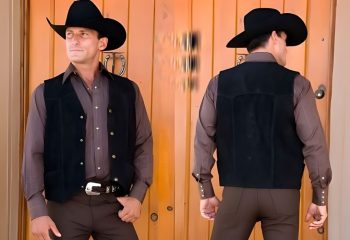
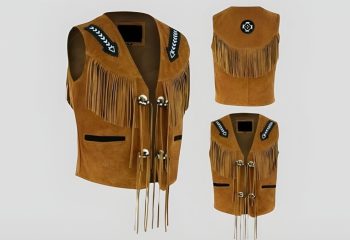
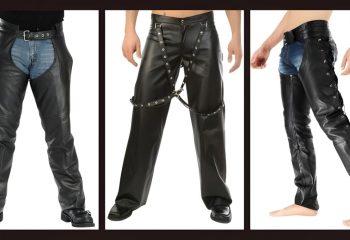
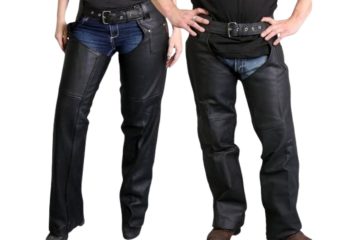
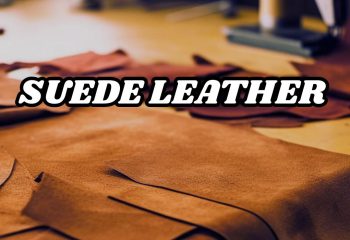
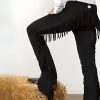


Recent Comments